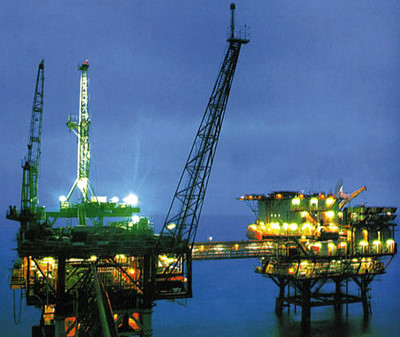
Translated by Andrew Vanburen from a Chinese language blog by Yinyue Laodaren in Sinafinance.
OTHER THAN THOSE lucky enough to have a massive inheritance to burn, the other 99.99% of us usually don't walk into a casino without at least knowing the basic rules of blackjack, craps, roulette and the slots.
Therefore, doing one's background market research is an essential prerequisite to mining the market for money-making opportunities -- especially in the slippery world of oil futures.
But as in any night at the casino that doesn't require the pawning off of descendants the next morning to meet new debts, self-control is also critical in knowing when to hold them, fold them or simply walk away.
Please indulge me for a bit of time while I describe my weekend.
I purposely left Sunday available so as to get to a book I’ve been wanting to read that’s been burning a hole on my shelf.
It is all about liquidating funds during a sustained downturn – or threats thereof.
In one chapter, a clear example of the investor/writer failing miserably on the self-control and self-discipline front is well exemplified.
In May of 2004, the writer says his fund was maxed out with petroleum futures when crude was averaging 37.66 usd per barrel for the year.

This price level was in and of itself was a bit of a shock to the global system, spurred on primarily by the steady but seemingly unstoppable ascent of China up the ranks of the leading GDP giants.
Along with this rise came a growing thirst for crude oil in the PRC as despite that around 80% of Mainland China’s electricity generation needs are currently being met by coal, the world’s largest car market and a whole host of other oil-consuming sectors were quickly making the country the world’s largest user of petroleum.
In fact, China recently surpassed the US in terms of total energy consumption, using up 11,680 trillion BTUs in 2012 alone so far compared to 10,970 trillion for the second place US.
And it was around this time that the first whisperings in earnest began to circulate about the likelihood of the PRC becoming sooner, rather than later, the world’s biggest economy.
So it was only natural at the time for those in the region, especially commuters stuck in Beijing’s notorious traffic with reportedly thousands of new cars added “net” to the gridlock daily, to have anything other than a very sanguine if not grudgingly bullish outlook on oil prices going forward.
But with the Coalition’s military activities in Iraq seeming to be gradually trending toward greater stability in mid-2004, global crude oil prices were suddenly faced with downside pressure.
Iraq’s officially confirmed petroleum reserves rank the war-torn Middle East country No.3 globally at around 143 billion barrels with a reserve-to-production ratio of 158 years.
So it is no coincidence that a cessation of hostilities there quickly translates into lower oil futures worldwide.

So what actually happened in the writer’s case?
He says that blips on the global economic stage and the temporary ratcheting down of the conflict in Iraq at the time spooked a fair number of those with their money in oil.
The average crude price had risen sharply from 22.81 usd per barrel in 2002 to 27.69 the following year, prompting the writer to invest heavily in futures at the time to begin with.
But the political, military and economic uncertainties of 2004 were very unsettling to oil futures investors and the author decided to cash in his chips in mid-2004, especially since oil plummeted to around 36 usd per barrel at the end of June that year.
However, he said if he had only had the patience, self-control and cool-headedness to step back and methodically use technical data such as historical trends and moving averages as instructors, his portfolio would have looked a lot different a few years ago.
Instead, the writer’s investments were suddenly bereft of petroleum-themed products and, as predictably as clockwork, the very next year the benchmark crude price surged to 50.04 usd per barrel for its yearly average, then 58.30, 64.20 and 91.48 for the following three years reaching a monthly recent high of 102.15 usd per barrel in April of last year.
The author said he only wished he had the self-control at the time to keep from finding himself over a barrel when the going got rough.
See also:
ALEX WONG: Don’t Let Gyrations Make Gamblers Of Us
PRC ENERGY: 3 Firms With Stellar Upside Potential







